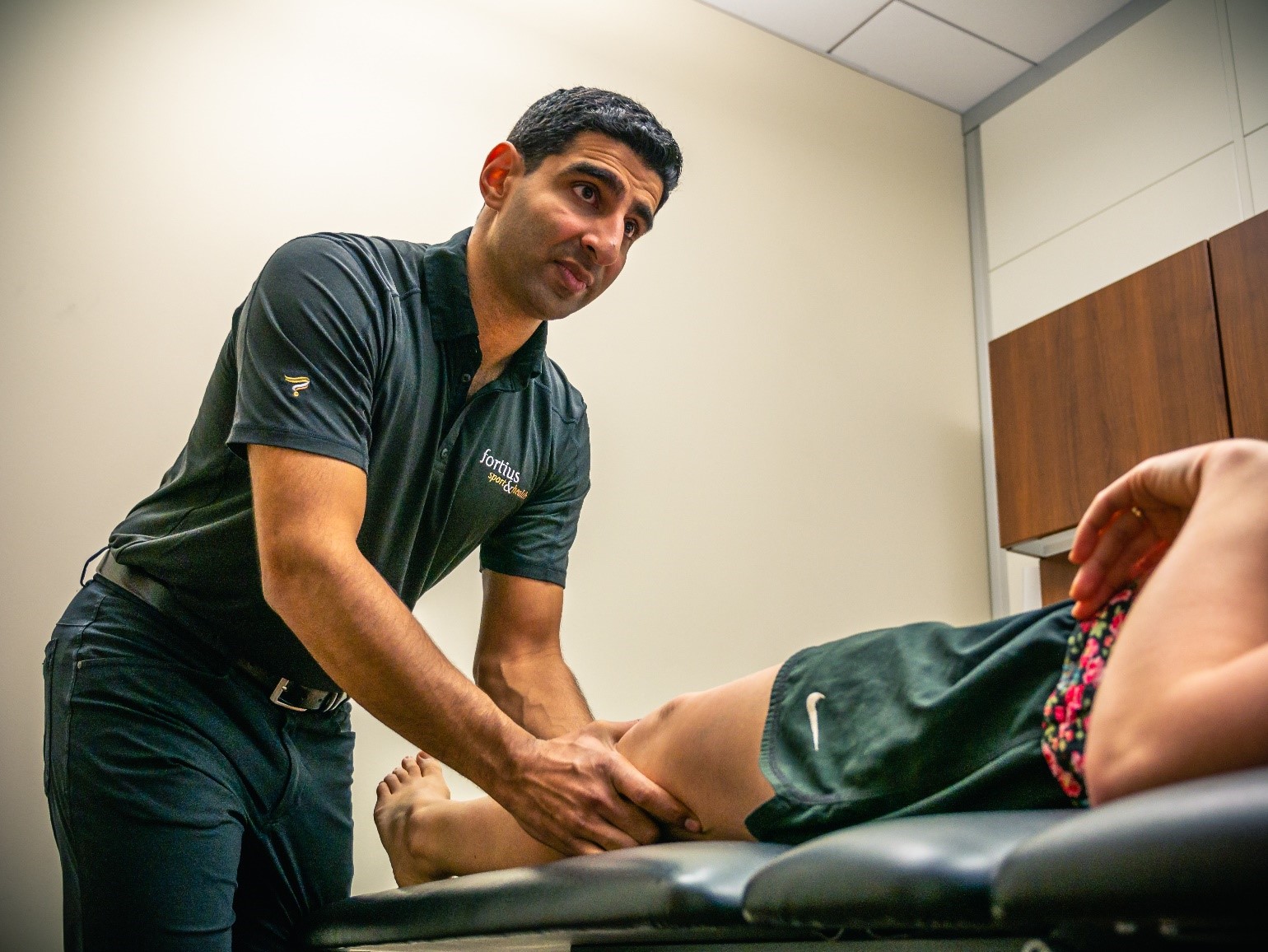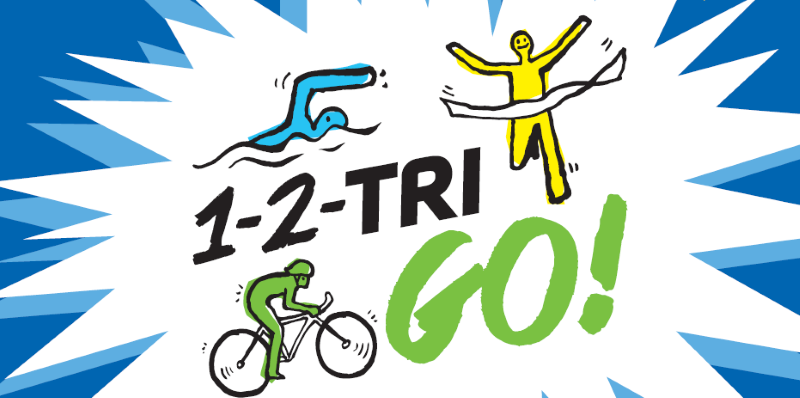by Tony Giannikouris, Hydrotherapy and Performance Rehabilitation Coach
Ask someone to mime the act of pulling a muscle and odds are you’re going to see them grasp the back of their leg. The dreaded hamstring pull.
If you’re reading this, hopefully you don’t already have a hamstring injury (but if you do, please read on!). If you don’t, knowing ahead of time how to handle one can improve your recovery and shorten time lost doing your favourite activities.
What are the chances?
High speed running and kicking are the most common mechanisms of injury. Of all the muscles in the body, hamstrings are pulled more than any other. In soccer players, they account for a third of all muscle injuries. In track athletes, three-quarters. Sports that involve running at high speeds, like football, or extreme ranges of motion like dance, are similarly at risk.
Though many happen in a similar way, the recovery can be very different for each person. Healing estimates are broad and vary depending on how the injury occurred and the severity of the muscle damage. A person with a low grade strain will take on average 3-8 weeks to return to full activity.
Re-injury rates are high, ranging from 12-48%, especially during the first week of return to play. A recurrence is also likely to have a longer recover period than the original injury.
The greatest risk factor for a future hamstring injury is having had one before, but proper rehabilitation can lower your risk.
What is it?
What is a “pull” or a “strain”? Simply put, it’s a tear in the fibers of the muscle, which can range from very small to a full rupture. It is not a cramp or general workout soreness. For simplicity, we will call it a strain.
How do you know if you have one? The most obvious hamstring strains occur during high speed running or kicking, where you feel a sharp pain right away and the muscle continues to be painful afterwards with any sort of stretch or contraction. Other times it can build up gradually into the sensation of a full strain. Though people will often report feeling an abnormal tightness coming on before the incident, sometimes there is no early warning.
If you experience that sort of pain with activity, you should stop and see a healthcare professional. Hamstring injuries can be complex and a proper assessment can rule out or address secondary issues, like neural involvement. Pushing through for even one more sprint or play can significantly worsen the injury and lengthen the time to heal.
It happened, what do I do?
A sport therapist (sport physiotherapist, massage therapist, chiropractor, etc.) can properly assess the injury and provide treatment. Early management of a strain can affect how long it takes to recover.
I should rest, right? Yes, but not too much. The initial healing does require rest to prevent damaging the muscle further, while you control swelling with compression and ice. However, once pain-free activity can start, it should. This can be as simple as restoring a limp-free walk as early as possible.
While time, rest, and general activity will allow the muscle to heal to the point of being pain free, asymptomatic people with previous hamstring injuries have shown altered function up to two years later. Appropriate load on the muscle helps repair the torn fibers and will also speed up recovery time.
But how do I know what’s okay to do? Early on, avoiding pain is a good guide! As you go, the right progressions walk the line between challenging the muscle enough to make it stronger without overloading it and causing further damage. It is not uncommon for an athlete to sprint a little too hard, too soon and suffer a setback.
Sometimes it’s a sudden instance that feels like a re-injury and sometimes the pain sets in soon after, letting them know that it was too much. While this does happen, the goal should be to avoid such setbacks.
Without the right level of challenge, rehab can turn into a frustrating game of one step forward, one step back. The goal is pain-free activity increasing in load and speed over time until you are able to participate confidently in your activity at 100%.
Guidance from a professional can ensure you have an individualized plan for recovery, to help you get back to your sport or activity faster, strong and more resilient (but more on this later).
How do I prevent this from happening (in the first place, or again)?
As you rehab (or prehab), it’s worth asking why injuries occur in the first place. Is it just a bad, unlucky step? An injured muscle is suddenly asked to produce more force than it can handle under specific conditions. Why? There are a lot of reasons, and the good news is there are many steps you can take to reduce your risk of a hamstring injury!
A weak hamstring muscle may be unable to cope with high forces. Strength is a good first line of defense. Even if you’ve never done strength training before, this is an important piece to returning to normal function and shielding yourself against injury.
Flexibility matters, so stretching at the appropriate time post-injury and at the right intensity is part of the process. However, you still need to be strong where the muscle is long. After injury, a hamstring will be especially weak in stretched positions and will retain this deficiency if not specifically addressed. For example, Romanian deadlifts work strength through a full range of motion better than traditional hamstring curl and Nordic exercises.
Poor core control and running posture will put the hamstring in a more vulnerable position. Core exercises and running drills to improve your mechanics will reduce excessive load.
Tight hip flexor muscles can compromise core position and posture. Stretch these often, especially if your day involves long periods of sitting with these muscles in a shortened position.
Fatigue can compromise strength and mechanics. Training your fitness across the spectrum of endurance and speed will make you more resilient against injury.
Uninjured athletes should consider these risk factors as well to reduce their risk of a hamstring strain. Strength and conditioning professionals design their training programs to improve performance, but also reduce the injury risks for their clients.
Embrace the process and learn from it
This can all take time and that’s okay. Recovery is a process and not always linear. Injuries are a potential learning opportunity where a mindful athlete can come out the other side stronger, fitter, and empowered with more knowledge to take care of themselves for the future.
Taking the time to properly rehabilitate a hamstring injury can pay off significantly down the line, as even athletes who have long considered themselves prone to chronic re-injury successfully rehabilitate to the point where they can happily say they haven’t pulled one in years!
Hamstring rehabilitation at Fortius
While you can do some of these steps on your own, for the faster and most lasting results we recommend working with a professional who is well versed in hamstring rehabilitation.
At Fortius, we have a team of sport therapists (physiotherapists, massage therapists, chiropractors) who have expertise in both diagnosis and rehabilitation.
We also have a team of strength & conditioning coaches that specialize in performance rehabilitation (return to competitive sport). These performance rehabilitation coaches, myself included, have a strength and conditioning background with acquired specialist knowledge and expertise in working with sports injuries.
We work collaboratively with sport therapists (here at Fortius or out in the community) to support a safe and seamless transition from injury back to sport and activity.
Interested in learning more about how Fortius can help you? Visit us today at www.fortiussport.com/treatment or call 604.292.2500.
Did you know Triathlon BC members receive a preferred rate on select injury prevention and performance testing? If you’re a current Triathlon BC member, Redeem here to save up to 25% using promo code TriFortius2018.




